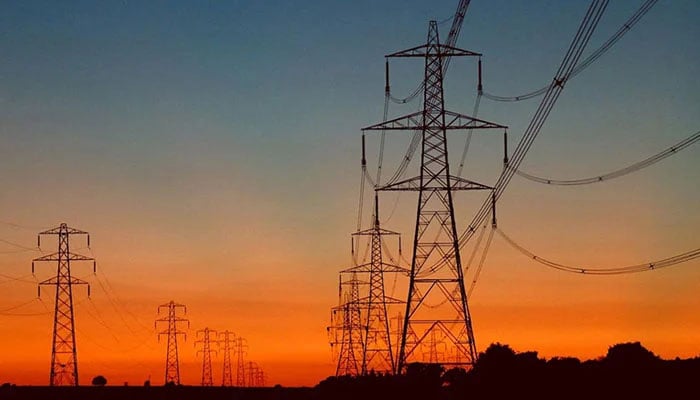Pakistan plans to raise power capacity by 40pc in eight years, shift to renewables
LAHORE: Pakistan is planning to boost its installed power generation capacity by 40 percent in the next eight years, as it seeks to meet the growing demand for electricity and shift to cleaner sources of energy.
The country aims to increase its power capacity from 45 gigawatts to 63 gigawatts by 2031, according to an official document. The plan, which is under the Special Investment Facilitation Council (SIFC), is based on a projected 5 percent average annual growth in the next eight years. By 2025, Pakistan plans to enhance installed power capacity to 51GW.
Although 40 percent jump in power generation seems a lot, the country’s aim to expand power generation capacity seems a modest addition in terms of electricity demand and per capita consumption.
In comparison, India’s current power generation capacity is 417GW, almost ten times more than Pakistan’s, whereas its population stands at over 1.4 billion, about six times bigger than Pakistan.
India plans to increase its power capacity to 900GW by 2031-32, a 116 percent increase. Despite concerns about climate change, India plans to increase its share of power generation from coal to 260GW from the current 205GW.
Pakistan on the other hand is least interested in developing cost-effective indigenous Thar coal in future, which was once considered a panacea for addressing energy woes effectively.
Unlike the regional trend, power establishment in the country is least interested in exploring cheap indigenous coal for power generation in run up to year 2031 under the SIFC plan. The share of locally produced Thar coal, one of the cheapest sources for electrifying the national grid, is expected to increase from 5 percent to just 7 percent by 2031.
It should be noted that that presently electricity generation from Thar coal is one of the cheapest sources for electrifying the national grid. It does not require any foreign exchange compared to imported coal or other fuels including Re-gasified Liquefied Natural Gas (RLNG).
The share of Regasified Liquefied Natural Gas (RLNG) is planned to be reduced to 13 percent from the current 22 percent. Similarly, the share of locally produced natural gas is aimed to be cut to just 3 percent from the current 8 percent by 2031. The share of nuclear energy in the power mix by 2031 is expected to be just 5 percent from the current 8 percent, showing negative growth.
According to the document, prospective energy needs of Pakistan underscore expansion of power generation / transmission capacities and import of additional gas. Besides, Pakistan is ideally located to connect energy rich Central Asian Republics with the world. opportunities are available to invest in renewable energy projects including hydel, solar, wind and transmission systems.
Touting as powering future, focus of the energy plan is to go big after adopting renewables, doubling its share in installed capacity. Under the planned energy transition for the period under review, Pakistan aims to expand its renewable energy, including hydro share in the energy mix from present 31 percent to 62 percent. It will help curtail reliance on fossil fuel and transition towards green energy.
-
 Therapist Killed In Office As Former Client Launches Knife Attack
Therapist Killed In Office As Former Client Launches Knife Attack -
 Gaten Matarazzo Brands 'Stranger Things' Final Scene 'nerve-racking'
Gaten Matarazzo Brands 'Stranger Things' Final Scene 'nerve-racking' -
 David Beckham Speaks Out After Son Brooklyn Beckham's Shocking Post
David Beckham Speaks Out After Son Brooklyn Beckham's Shocking Post -
 Sophie Turner Gets Candid About 'imposter Sydrome' Post 'GOT'
Sophie Turner Gets Candid About 'imposter Sydrome' Post 'GOT' -
 When Nicola Peltz's Boyfriend Anwar Hadid Found Solace In Dua Lipa's Arms
When Nicola Peltz's Boyfriend Anwar Hadid Found Solace In Dua Lipa's Arms -
 Claire Foy Reveals Rare Impact Of 'The Crown' Gig On Career
Claire Foy Reveals Rare Impact Of 'The Crown' Gig On Career -
 Megan Thee Stallion Teases New Music On The Way
Megan Thee Stallion Teases New Music On The Way -
 Blonde Kate Stuns In Photos With Prince William During Rare Joint Engagement
Blonde Kate Stuns In Photos With Prince William During Rare Joint Engagement -
 Kate Gosselin Reveals Harrowing Moment Thief Nearly Took Her Down
Kate Gosselin Reveals Harrowing Moment Thief Nearly Took Her Down -
 Billy Bob Thornton Weighs In On Contrast To 'Landman' Role
Billy Bob Thornton Weighs In On Contrast To 'Landman' Role -
 Amanda Holden May Swap Position To Different Reality Show: See Which
Amanda Holden May Swap Position To Different Reality Show: See Which -
 The Truth Behind Victoria Beckham's 'inappropriate' Wedding Dance Video
The Truth Behind Victoria Beckham's 'inappropriate' Wedding Dance Video -
 AI Startup Raises $480 Million At $4.5 Billion Valuation In Earlier Gains
AI Startup Raises $480 Million At $4.5 Billion Valuation In Earlier Gains -
 North Carolina Woman Accused Of Serving Victims With Poisoned Drinks
North Carolina Woman Accused Of Serving Victims With Poisoned Drinks -
 Robert Redford’s Daughter Amy Sings Praises Of Late Father
Robert Redford’s Daughter Amy Sings Praises Of Late Father -
 OpenAI And ServiceNow Team Up To Embed ChatGPT In Business Workflows
OpenAI And ServiceNow Team Up To Embed ChatGPT In Business Workflows




